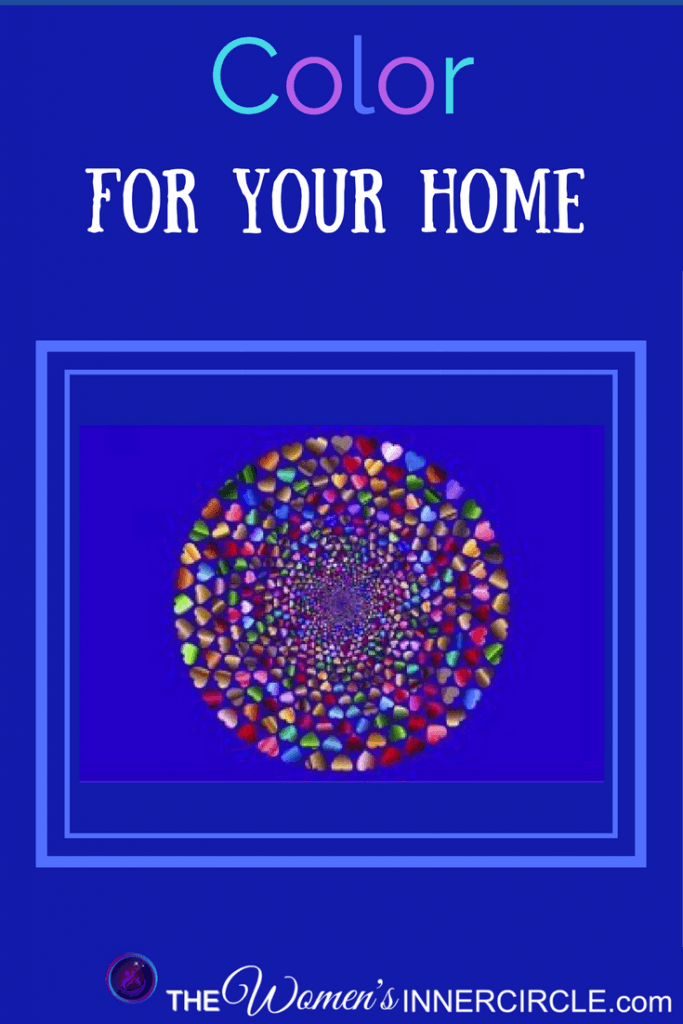Choosing a color for your home can really be quite confusing. Read on for some great tips …

Selecting color for our homes can send some of us into a major tail spin. The idea of choosing a color for our walls can be intimidating, for sure, as there are billions of possibilities, but it can also be an experience in self-discovery. Color is complex, but it doesn’t have to be overwhelming if you take a step back to understand the basics of color psychology, color theory (that’s a topic for another article), and how color can be used to create mood.
First, let’s explore the importance of color in our lives. Just a simple exercise will illustrate just how much color does affect our feelings about …well, just about everything. Take a moment and look outside your window and begin the process of removing color from everything you see. Turn the beautiful blue sky to a mid-tone grey, and, next, turn the rich green grass to a darker shade of grey. Little by little, paint everything grey: the flowers, the cars on your street, the trees, and the birds. Now imagine walking inside this landscape and try to tap into your gut-level emotions. What words come to mind? I think of words frigid, stark, eerie, isolating, and empty. Seeing this scene in my mind literally makes my blood run cold! Now in your mind’s eye, restore, one by one, each item to its original color and, again, sense how you are feeling. I feel relieved, revived, and joyful. That’s what color does for us…it makes us happy, inspired, relaxed, comfortable, powerful, excited, and, yes, it can even make us sad.
It’s a known fact that we all need color in our lives, but for various reasons, some of us endorse the use of color, but need a bit of guidance in terms of color schemes, the intensity of the color to be used, or the correct color to elicit a desired mood. Others of us are simply afraid to use color, and, therefore, chose to paint everything a neutral tan or beige. Again, understanding and acknowledging the role color plays in our lives can be enlightening, because color not only enhances our lives, but color is, to a great extent, life itself, as we just illustrated in the simple exercise.
Are you enjoying the information so far on Color for Your Home?
So, what exactly is color? Scientifically, color is simply the section of light which we are able to see. It’s visible light. We have all seen rainbows or held up prisms and seen all the colors in the rainbow. It’s light splitting into these colors and how lucky we are that we can actually see light! It’s just that simple.
Color is an important element of our world, not only in nature in our flowers and trees, but also in the architectural world where we live. It has not only a decorative function, but color is a means of communication, influencing how what we want our spaces to say about us and how we want to feel when we are in them.
We use color in so many other ways, too. How often have you heard the expressions “green with envy or “feeling blue, or even “feeling in the pink”? We use color to describe our moods again and again, so let’s use color to create the mood we want. Right? When you think of color this way, color becomes an exciting and fun tool to use.
Researchers in the field of Applied Color Psychology have shown that color is a visual language shared by all people. They have illustrated that over 81% of human beings, regardless of age, nationality, or culture, seem to make the same or similar color associations. For instance, typically, the colors red and pink make us think of love and passion (Valentine’s Day). Red also can be associated with anger and even life, as blood is our life force. Yellow most often brings to mind happiness and joviality. Orange signifies a similar emotion, but to a more intense degree. Life and healing are referenced by green, and peace and tranquility by blue and blue/green. Purple typically associates with royalty, while black can be associated with danger, death, and hatred, although also sophistication. When we think of white, we think of cleanliness and virtue, even heaven.
Color can also be used to change our perception of time and our biology. Red can make time go faster, and increases our appetites, one of the reasons many restaurants and nightclubs use red in large areas. Blue can make time feel as if it is going slower and is calming, and, therefore, a good color to use in a room where we want to relax, such as our bedroom or even our bathroom (think home spa).
Understanding the basics of color psychology and some guidelines of color theory (in an upcoming article), you will be empowered to enjoy color in ways that you might never have imagined. Color is to be embraced, and finding the perfect color for the rooms of your home will become exciting and fun, and not an activity to run from. Color in our homes is color in our lives, and we all want to live colorfully.
For more design articles Read Here for there’s No place like Home by Design and Here for 5 Steps to Finding Your Favorite Style of Home Decor
Brenda Weiss, M.S.
Registered Interior Designer / Professional Color Consultant
A.S.I.D., I.I.A.C.C. Provisional
Weiss Design Group, Inc.
